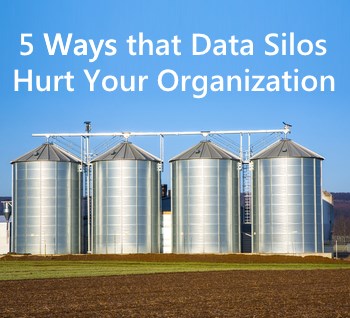Five Ways that Data Silos Hurt Your Organization
| Written by
Elissa K. Miller |  Back
Back

Data “silos” occur when different departments use different systems to collect and store information like memberships, registrations, visits and donations. Because departments at cultural organizations often adopt new technologies that meet only their own needs, data silos are a common legacy. Unfortunately, they’re a legacy that impacts your bottom line—and your ability to support your mission—in several important ways:
- Unnecessary costs. Each department’s individual solutions can incur startup and subscription fees as well as ongoing support costs and transaction fees. And, with multiple vendors, revenue may be stored in multiple merchant accounts with different terms and conditions that release funds on different schedules. Custom integrations to share data between disparate systems are costly and add another layer of complexity that makes it harder to investigate and resolve problems.
- Inefficient administration and communication. When different departments use different systems, you can bet that data problems abound. A member might update their contact information with the membership department, but when the information isn’t shared, the other departments may be sending their messages into the black hole of abandoned email addresses. It’s great that the education department can email last year’s daycamp families, but they can’t tailor a message to families with memberships (or families without memberships) without access to member data.
- Inferior visitor experience. No matter how many different internal departments you have, your visitors, members and donors view your organization as a single entity. They expect to be able to renew their membership, register kids for camp, book a facility rental and make a donation in a single transaction. If they need to use multiple systems with different logon accounts and enter their credit card over and over again, they’re less likely to follow through with all the transactions. And, that’s just the tip of the poor user experience iceberg. If memberships aren’t integrated with registration, member benefits can’t automatically be applied online.
- No insight. If your data is in different systems, you can’t get a 360-degree view of your visitors, members, donors and general operations. So, you can’t rely on data to help you identify opportunities and craft programs, discounts and promotions to increase participation, memberships and donations. You can’t identify query a unified database to find people who match specific criteria and automatically customize your communications. Basically, without a single database and analytics, you’re operating without complete information. Intuition is important, but intuition combined with data is the “secret sauce” that makes your organization stand out.
- Poor stewardship. If you don’t have information about every constituent at your fingertips, you can’t identify which constituents are poised to become passionate advocates, and which passionate advocates are likely to become donors or board members. You can’t personalize communications or tailor your messaging to appeal to the right people, in the right way, at the right time. No matter how effectively your team operates now, an integrated database will help you develop better strategies, better outreach, better programs and overall better stewardship of your most important resources: your constituents.
- A single database that stores information about every interaction and transaction
- Powerful tools that don’t require any department to compromise on functionality
- A suite of integrated features that allow you to harness the power of your database to support every aspect of your mission.
